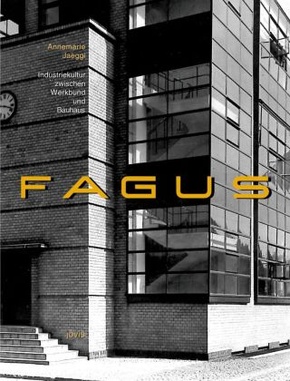Fagus - Industriekultur zwischen Werkbund und Bauhaus
| Verlag | Jovis |
| Auflage | 2021 |
| Seiten | 152 |
| Format | 21,3 x 1,8 x 28,1 cm |
| Gewicht | 942 g |
| ISBN-10 | 3931321835 |
| ISBN-13 | 9783931321833 |
| Bestell-Nr | 93132183A |
Fagus ist die Geschichte eines Gesamtkunstwerkes und ein frühes Beispiel für corporate identity: Das von Walter Gropius und Adolf Meyer ab 1911 errichtete Fagus-Werk in Alfeld an der Leine gilt als Ursprungsbau der Moderne. Den Architekten gelang es, einem mittelständischen Betrieb ein völlig ungewohntes, vom Traditionellen abweichendes Erscheinungsbild zu geben. Das war möglich, weil Bauherr und Architekt eine selten günstige Konstellation bildeten. In der Person des Fabrikanten verband sich lebensreformerischer Anspruch mit amerikanischer Unternehmensphilosophie. Das Fabrikgebäude ist mit seiner repräsentativen Sachlichkeit und dem großflächigen Gebrauch von Glas auch Ausdruck eines neuen unternehmerischen Selbstbewusstseins und einer modernen Werbestrategie. An der Gestaltung ihrer Maschinen und Firmendrucksachen wirkte die Avantgarde mit. Die Liste der Mitarbeiter liest sich wie ein Who's Who der internationalen Moderne: so gestalteten Johannes Molzahn, Theo von Doesburg und H erbert Bayer Fagus-Reklame. Der Fotograf Albert Renger-Patzsch formt mit seiner Fotoserie von 1928 das heute klassisch zu nennende Bild des Fagus-Werks und seiner Produkte.
Fagus is the story of a Gesamtkunstwerk and an early example of corporate identity: the Fagus factory in Alfeld an der Leine, built by Walter Gropius and Adolf Meyer from 1911, is regarded as the founding structure of modernism. The architects succeeded in giving a medium-sized company a completely unusual face that was anything but traditional. This was possible because the client and architect formed an extraordinarily favorable constellation. The factory owner combined an affinity toward the life reform movement with American corporate philosophy. With its representative objectivity and extensive use of glass, the factory is also an expression of a new entrepreneurial self-confidence and a modern advertising strategy. The avant-garde further influenced the design of the company's machines and its printed matter. The list of collaborators reads like a Who's Who of international modernism: some of Fagus's advertising, for instance, was designed by Johannes Molzahn, Theo von Doesb urg, and Herbert Bayer. And with his series of photographs from 1928, the photographer Albert Renger-Patzsch created what can today be called a classic image of the Fagus factory and its products.

